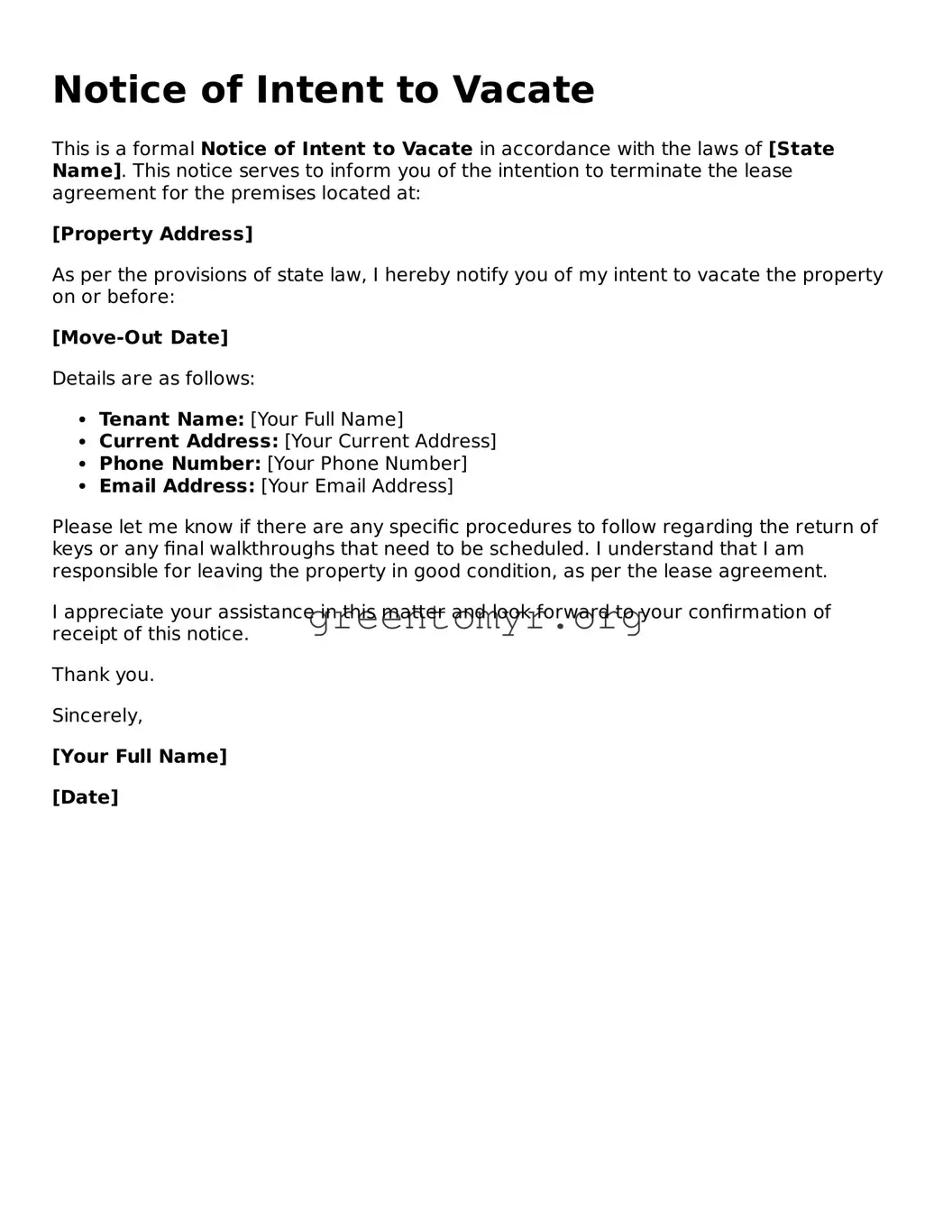A Notice of Intent to Vacate form is a document used by tenants to formally communicate their decision to leave a rental property. This notice serves as an official notification to the landlord or property manager and typically specifies the move-out date, ensuring all parties are aware and can prepare accordingly.
The tenant currently occupying the rental property should complete the form. This includes anyone listed on the lease agreement. Each tenant may need to submit their own notice depending on the lease terms and requirements set by the landlord.
How much notice is usually required?
The required notice period can vary by lease agreement and state law, but it commonly ranges from 30 to 60 days. Review your lease for specific terms. If unsure, the landlord or property management typically provides guidance on their expectations regarding notice periods.
Key information usually includes:
-
Tenant's name and contact information
-
Property address
-
Move-out date
-
A request for the landlord's address for return of the security deposit
-
Signature of the tenant
Can a Notice of Intent to Vacate be sent electronically?
Yes, in many cases, electronic notifications are acceptable. However, it is essential to confirm this with the landlord or property management. Some may require a physical copy or specific delivery methods. Always check your lease or guidelines provided to avoid any issues.
What happens after submitting the Notice of Intent to Vacate?
After the Notice of Intent to Vacate is submitted, the landlord may review the notice and confirm the intended move-out date. Tenants should prepare for a property inspection and the return of the security deposit. Communication continues to be vital. Discuss any necessary arrangements with your landlord to ensure a smooth transition.
Is there a penalty for not providing proper notice?
Potential penalties may include losing part or all of the security deposit. Also, the tenant may remain responsible for rent until proper notice is given. Thoroughly reading the lease will provide clarity on any consequences tied to failure to deliver notice as required.
What if I change my mind after submitting the Notice of Intent to Vacate?
If you think you may want to stay, communicate with your landlord as soon as possible. Some landlords might be open to allowing tenants to retract the notice, especially if the vacancy hasn’t been actively pursued. However, there’s no guarantee that your request will be accommodated, so it’s best to address this promptly.
